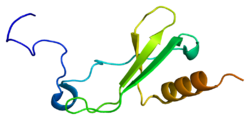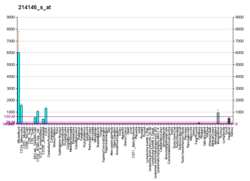Chemokine (C-X-C motif) ligand 7 (CXCL7) is a human gene. [5]
Contents
The encoded protein, Chemokine (C-X-C motif) ligand is a small cytokine belonging to the CXC chemokine family. It is an isoform of Beta-Thromboglobulin or Pro-Platelet basic protein (PPBP). [6]
It is a protein that is released in large amounts from platelets following their activation. [7] It stimulates various processes including mitogenesis, synthesis of extracellular matrix, glucose metabolism and synthesis of plasminogen activator. [8] [9]








